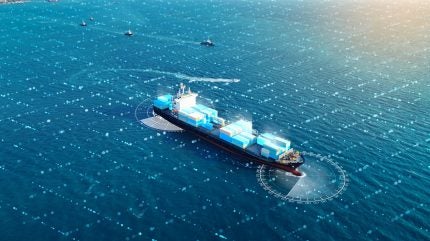
OKI, a Japan-based information and telecommunication manufacturer, has developed a ship classification artificial intelligence (AI) system technology that automatically classifies ships through deep learning of underwater sounds.
This technology enables “continuous and automatic acquisition” of ship classification data, even in areas such as busy ports with high ship traffic or at night when visual identification is challenging.
OKI’s internal verification experiments have shown that the system can classify ships with an accuracy of 90% or more, using only minimal learning data, according to the company.
Sound waves, which can travel underwater for several to thousands of kilometres, are the primary means for classifying objects beneath the sea due to the attenuation of radio waves and scattering of light waves.
Underwater sounds, “unique” to each source, whether an animal or a ship, provide a means for identification. Traditional methods involve human analysis of these sounds, but results can vary based on the individual’s skill level.
Leveraging its experience in underwater acoustic research, OKI has developed systems that analyse the characteristics of sounds captured by underwater microphones.

US Tariffs are shifting - will you react or anticipate?
Don’t let policy changes catch you off guard. Stay proactive with real-time data and expert analysis.
By GlobalDataThe new ship classification AI system technology deploys deep learning to automatically classify ships based on their sound frequency characteristics, thus reducing reliance on human expertise and addressing the demand for labour-saving solutions.
The verification conducted by OKI uses ship sound data to create deep learning models.
Deep learning models usually require “extensive data” to accurately identify sound types. However, due to the limited availability of underwater sound data and the challenges in preparing diverse ship sound information, OKI implemented data augmentation and semi-supervised learning techniques.
These methods enabled the system to achieve “high accuracy” even with limited learning data, stated the company.
OKI TOKKI Systems division head and senior executive officer Yoichi Kato said: “Going forward, we will seek co-creation partners to gather field data and conduct practical verification with a view to commercialising this technology.”



